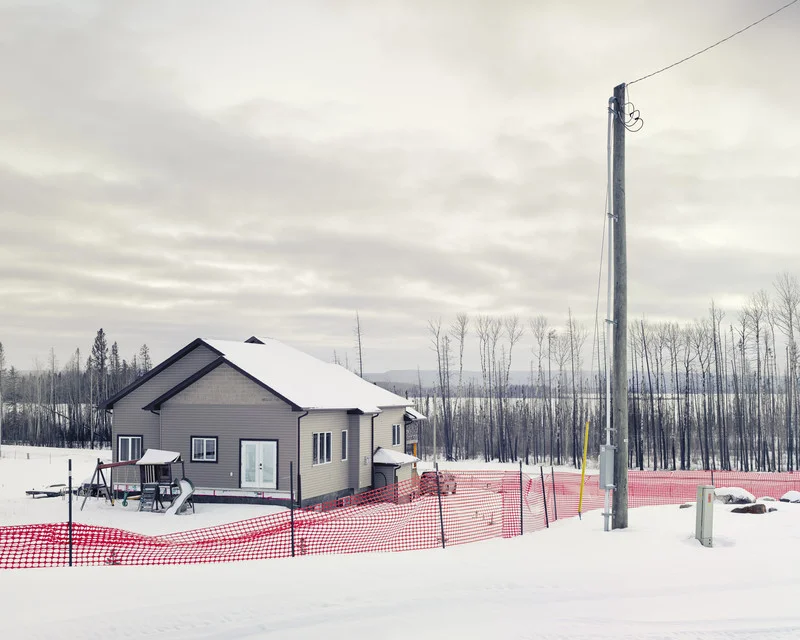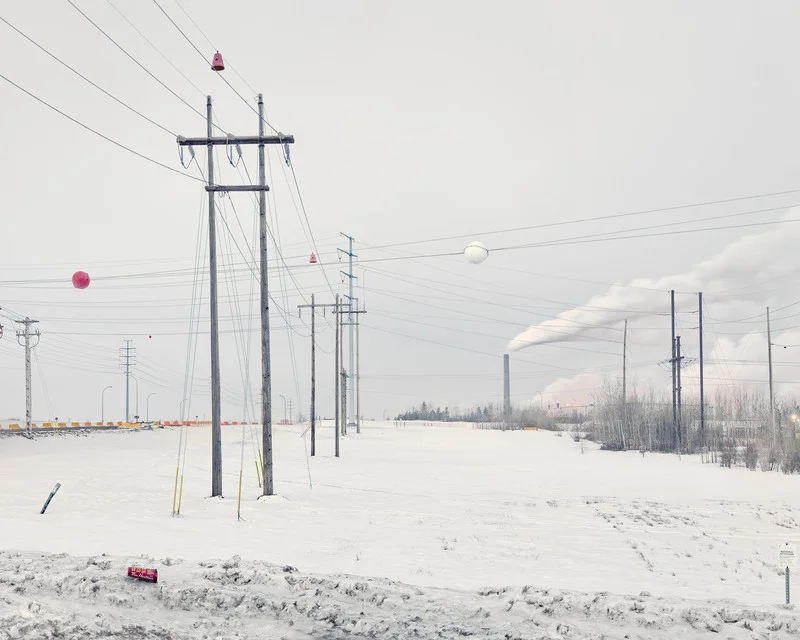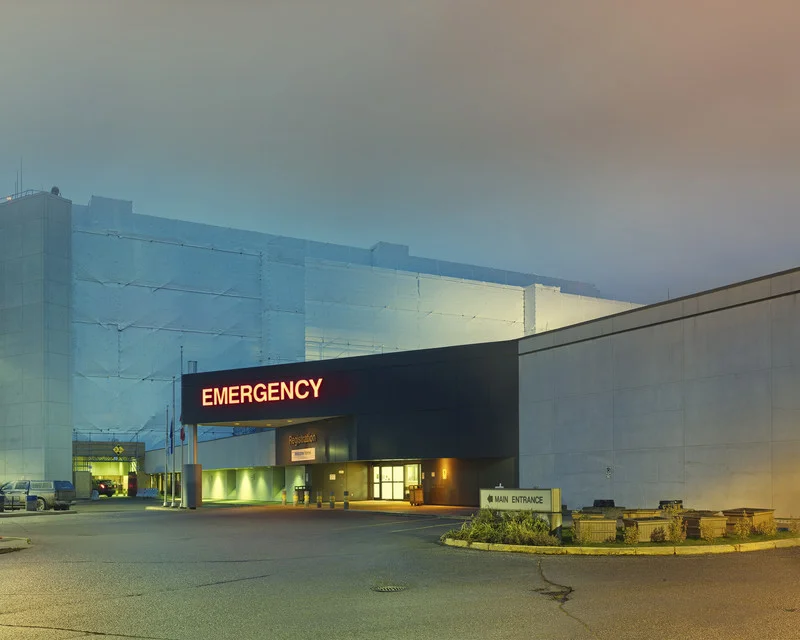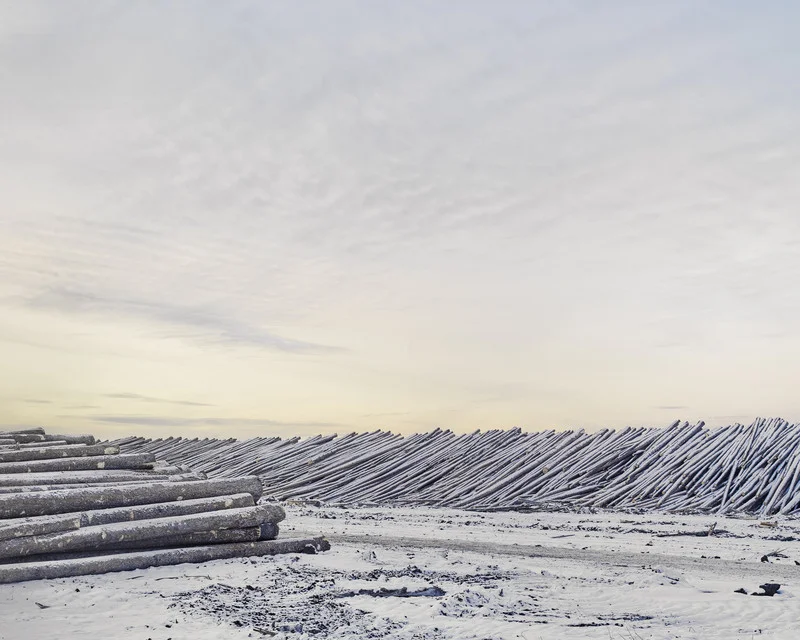“Our failure to address the most awesome challenge of human history, with the possible exception of nuclear weapons, is indeed a true derangement. These are the two existential challenges that overwhelm anything else, completely overshadow all other discussions.”

100 Townsend Dr, Anzac, AB T0P 1J0, Canada. Feburary 2017.

Black Spruce, Highway 63, near Fort McMurray, Alberta, 2016
With the arrival of industrialized mining, the Canadian settlement of Fort McMurray grew from 1,100 in 1970 to its peak of 125,032 in 2015. Situated in the heart of Alberta’s Tar Sands the urban service area is alive with activity focused around the world’s largest mine, by area, potentially covering 149,000 square kilometres, equivalent in size to Greece.

Syncrude Oil Refinery, Mildred Lake, Alberta, Canada, 2017

Callen Drive, over looking Parsons Creek subdivison, Fort McMurray, Alberta, Canada, 2017.
In 2015, government-run Environment Canada issued data showing that seven refineries within a 30-kilometre radius released a total of 34 million tonnes of CO2 equivalent into the atmosphere that year. The gases and other toxins are produced in order to separate the mineral bitumen from the earth to create refined synthetic oil. Production during 2016 distributed 2.4 million barrels of oil daily via 30-inch pipelines. These channels are being upgraded and include the planned Keystone XL pipeline. The scale of engineering and mining has altered the landscape beyond comprehension and made Canada third highest in global oil supply.

Hospital St, Fort McMurray, Alberta, Canada, 2016

Grayling Terrace, Fort McMurray, Alberta, Canada, 2016
During spring of 2016, Fort McMurray’s residents encountered a different kind of force, the Horse River Wildfire. Evacuating with little warning, the hellfire approached the city limits then changed the lives and history of a hard working community. These pictures look at the aftermath and clean up. Fort McMurray is isolated and located deep in the boreal forest, the world’s largest woodland where the fire regime is forming under the warming climate.

Lumber Yard, HWY-63, Chard, Alberta, Canada. February 2017
click to view the complete set of images in the archive
The full project contains 160 colour photographs, 3000-word essay, journal entry, 20-page dossier, contaminated human hair samples and sound recordings.



